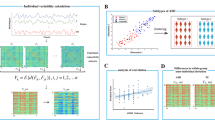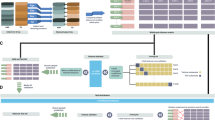Abstract
The aim of our study was to subcategorize Autistic Spectrum Disorders (ASD) using a multidisciplinary approach. Sixty four autistic patients (mean age 9.4±5.6 years) were entered into a cluster analysis. The clustering analysis was based on MRI data. The clusters obtained did not differ significantly in the overall severity of autistic symptomatology as measured by the total score on the Childhood Autism Rating Scale (CARS). The clusters could be characterized as showing significant differences: Cluster 1: showed the largest sizes of the genu and splenium of the corpus callosum (CC), the lowest pregnancy order and the lowest frequency of facial dysmorphic features. Cluster 2: showed the largest sizes of the amygdala and hippocampus (HPC), the least abnormal visual response on the CARS, the lowest frequency of epilepsy and the least frequent abnormal psychomotor development during the first year of life. Cluster 3: showed the largest sizes of the caput of the nucleus caudatus (NC), the smallest sizes of the HPC and facial dysmorphic features were always present. Cluster 4: showed the smallest sizes of the genu and splenium of the CC, as well as the amygdala, and caput of the NC, the most abnormal visual response on the CARS, the highest frequency of epilepsy, the highest pregnancy order, abnormal psychomotor development during the first year of life was always present and facial dysmorphic features were always present. This multidisciplinary approach seems to be a promising method for subtyping autism.
Similar content being viewed by others
References
Abell F, Krams M, Ashburner J, Passingham R, Friston K, Frackowiak R, Happe F, Frith C, Frith U (1999) The neuroanatomy of autism: a voxel-based whole brain analysis of structural scans. NeuroReport 10:1647–1651
Aylward EH, Minshew NJ, Goldstein G, Honeycutt NA, Augustine AM, Yates KO, Barta PE, Pearlson GD (1999) MRI volumes of amygdala and hippocampus in non-mentally retarded autistic adolescents and adults. Neurology 53:2145–2150
Ballottin U, Bejor M, Cecchini A, Martelli A, Palazzi S, Lanzi G (1989) Infantile autism and computerized tomography brain-scan findings: specific versus nonspecific abnormalities. J Autism Dev Disord 19:109–117
Beglinger LJ, Smith TH (2001) A review of subtyping in autism and proposed dimensional classification model. J Autism Dev Disord 31:411–422
Borden MC, Ollendick TH (1994) An examination of the validity of social subtypes in autism. J Autism Dev Disord 24:23–38
Castelloe P,Dawson G (1993) Subclassification of children with autism and pervasive developmental disorder: a questionnaire based on Wing’s subgrouping scheme. J Autism Dev Disord 23:229–241
Eaves LC, Ho HH, Eaves DM (1994) Subtypes of autism by cluster analysis. J Autism Dev Disord 24:3–22
Elia M, Ferri R, Musumeci SA, Del Gracco S, Bottitta M, Scuderi G, Miano G, Panerai S, Bertrand T, Grubar JC (2000) Sleep in subjects with autistic disorder: a neurophysiological and psychological study. Brain Dev 22:88–92
Eliez S, Reiss AL (2000) Annotation: MRI neuroimaging of childhood psychiatric disorders: a selective review. J Child Psychol Psychiatry 41:679–694
Hameury L, Roux S, Bartelemy C, Adrien JL, Desombre H, Sauvage D, Garreau B, Lelord G (1995) Quantified multidimensional assessment of autism and other pervasive developmental disorders. Application for bioclinical research. Eur Child Adolesc Psychiatry 4:123–135
Hardan AY, Minshew NJ, Keshavan MS (2000) Corpus callosum size in autism. Neurology 55:1033–1036
Hendren RL, DeBacker I, Pandina GJ (2000) Review of neuroimaging studies of child and adolescent psychiatric disorders from the past 10 years. J Am Acad Child Adolesc Psychiatry 39:815–828
Lord C, Rutter M, LeCouteur A (1994) Autism diagnostic interview—revised: a revised version of a diagnostic interview for caregivers of individuals with possible pervasive developmental disorders. J Autism Dev Disord 24:659–685
Malvy J, Barthelemy C, Damie D, Lenoir P, Bodier C, Roux S (2004) Behaviour profiles in a population of infants later diagnosed as having autistic disorder. Eur Child Adolesc Psychiatry 13:115–122
Manes F, Piven J, Vrancic D, Nanclares V, Plebst C, Starkstein SE (1999) An MRI study of the corpus callosum and cerebellum in mentally retarded autistic individuals. J Neuropsychiatry Clin Neurosci 11:470–474
O’Brien SK (1996) The validity and reliability of the Wings subgroups questionnaire. J Autism Dev Disord 26:321–335
Piven J, Bailey J, Ranson BJ, Arndt S (1997) An MRI study of the corpus callosum in autism. Am J Psychiatry 154:1051–1056
Prior M, Boulton D, Gajzago C, Perry D (1975) The classification of childhood psychoses by numerical taxonomy. J Child Psychol Psychiatry 16:321–330
Rescorla L (1988) Cluster analytic identification of autistic preschoolers. J Autism Dev Disord 18:475–492
Roux S, Garreau B, Barthelemy C, Hameury L (1994) Implementation of a bioclinical database for research and treatment studies in childhood autism: preliminary report on a concrete experience. Dev Brain Dysfunct 7:192–200
Roux S, Malvy J, Bruneau N, Garreau B, Guerin P, Sauvage D, Barthelemy C (1995) Identification of behaviour profiles within a population of autistic children using multivariate statistical methods. Eur Child Adolesc Psychiatry 4:249–258
Roux S, Bruneau N, Garreau B, Guerin P, Adrien JL, Dansart P, Gomot M, Barthelemy C (1997) Bioclinical profiles of autism and other developmental disorders using a multivariate statistical approach. Biol Psychiatry 42:1148–1156
Schopler E, Reichler RJ, DeVellis RF, Daly K (1980) Toward objective classification of childhood autism: childhood autism rating scale (CARS). J Autism Dev Disord 10:91–103
Schultz RT,Gauthier I,Klin A, Fulbright RK, Anderson AW, Volkmar FR, Skudlarski P, Lacadie C, Cohen DJ, Gore JC (2000) Abnormal ventral temporal cortical activity during face discrimination among individuals with autism and Asperger syndrome. Arch Gen Psychiatry 57:331–340
Sears LL, Vest C, Mohamed S, Bailey J, Ranson BJ,Piven J (1999) An MRI study of the basal ganglia in autism. Prog Neuropsychopharmacol Biol Psychiatry 23:613–624
Sevin JA, Matson JL, Coe D, Love SR, Matese MJ, Benavidez DA (1995) Empirically derived subtypes of pervasive developmental disorders: a cluster analytic study. J Autism Dev Disord 25:561–578
Siegel B, Anders TF, Ciarenello RD, Bienenstock B, Kraemer HC (1986) Empirically derived subclassification of the autistic syndrome. J Autism Dev Disord 16:275–294
Stevens MC, Fein DA, Dunn M, Allen D, Waterhouse LH, Feinstein C, Rapin I (2000) Subgroups of children with autism by cluster analysis: a longitudinal examination. J Am Acad Child Adolesc Psychiatry 39:346–352
Volkmar FR, Cohen DJ, Bregman JD, Hooks MY, Stevenson JM (1989) An examination of social typologies in autism. J Am Acad Child Adolesc Psychiatry 28:82–86
Ward JH (1963) Hierarchical grouping to optimize an objective function. J Am Statist Assoc 58:236–244
Wing L, Gould J (1979) Severe impairments of social interaction and associated abnormalities in children: epidemiology and classification. J Autism Dev Disord 9:11–29
World Health Organization (1992) International Classification of Diseases, 10th ed. WHO, Geneva
Yudofsky SC, Hales RE (1997) The American Psychiatric Press Textbook of Neuropsychiatry. 3rd ed. American Psychiatric Press, Washington, DC
Author information
Authors and Affiliations
Rights and permissions
About this article
Cite this article
Hrdlicka, M., Dudova, I., Beranova, I. et al. Subtypes of autism by cluster analysis based on structural MRI data. Europ.Child & Adolescent Psych 14, 138–144 (2005). https://doi.org/10.1007/s00787-005-0453-z
Accepted:
Issue Date:
DOI: https://doi.org/10.1007/s00787-005-0453-z




